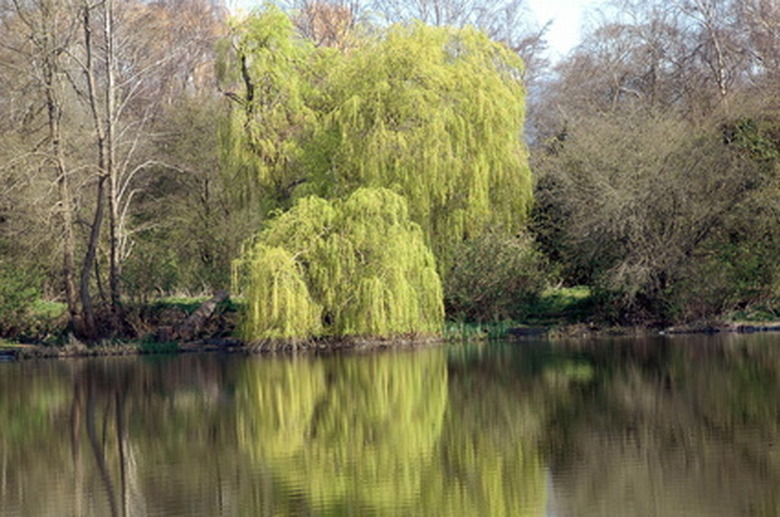Problems With Willow Trees Growing In A Pond
There are several varieties of willow (Salix) that are suitable for planting in the landscape, such as the weeping willow. Willow trees prefer to grow in damp moist soils, so the area around a pond is ideal for most willow trees. But willow trees planted near a pond can be a source of numerous problems.
Absorption of Pond Water
A willow tree usually grows very well near a pond or other area where there is lots of moisture, including standing water. Willow trees also absorb more water than most trees. This causes a decline in pond water levels that is more commonly noticed during dry periods, if the pond is not kept full with an outside water source.
Dam Destabilization
The roots of willow trees are known for their aggressiveness when seeking water. They are known to grow completely through pond dams and liners. The roots also grow large very quickly. Because the average life span of a willow tree is less than 50 years, when the tree dies it leaves large rotting roots that leave channels in the dam for water to escape, thus destabilizing the dam.
- There are several varieties of willow (Salix) that are suitable for planting in the landscape, such as the weeping willow.
- Willow trees prefer to grow in damp moist soils, so the area around a pond is ideal for most willow trees.
Leaf Fall
All willows are deciduous, meaning they lose their leaves in the fall. When this happens, large amounts of leaves fall into the pond water and sink to the bottom. Over the years, as the leaves begin to rot, they give off a variety of gases. Some, such as methane gas and ammonia, are toxic to fish.
Salicylic Acid Poisoning
Willow bark contains salicylic acid, the ingredient in common aspirin. In low amounts, it does not harm fish populations in the pond. But if large areas of the woody sections of the willow trees are submerged in the water, and leaves and branches are soaking in the water, salicylic acid levels can build up to toxic levels in the pond water.
- All willows are deciduous, meaning they lose their leaves in the fall.
- But if large areas of the woody sections of the willow trees are submerged in the water, and leaves and branches are soaking in the water, salicylic acid levels can build up to toxic levels in the pond water.
